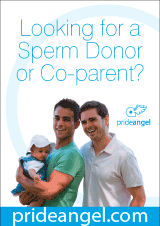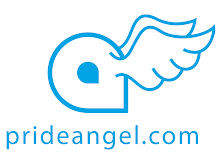Like many couples, Ryan and Holly had always dreamed of having their own family. In 2004, after a year and a half of marriage, the two decided to go off birth control, looking forward to being a family.
Over the next twelve months, Holly took 12 pregnancy tests. Each one gave the same result—not pregnant.
Infertility is defined by the American Society for Reproductive Medicine (ASRM) as the inability to conceive within one year of trying – an issue that affects about 10 percent of women in their childbearing years. For many, fertility medications or assisted reproduction technologies like IVF help overcome the obstacle of infertility to create a family.
For some women, however, an insurmountable obstacle to their fertility reveals itself in the viability of their ovaries. The doctors at the Servy Massey Fertility Institute say that women entering their late 30s and early 40s experience a significant decline in the number of eggs in their ovaries and the quality of the eggs that are left.
For a very small percentage of infertile women, certain conditions can affect the ovaries, eggs, or uterus before aging ever does, and donor eggs are the only way for the couple to become pregnant.
In 2005, Holly had visited her OB/GYN, who found no obvious problems, but prescribed Clomid (an ovulation stimulation drug). Holly and Ryan dove into the world of infertility treatments, connecting with Dr. Edouard Servy at SMFI after learning Holly had polycystic ovarian syndrome (PCOS).
Dr. Servy performed a few rounds of IUI (intrauterine insemination) with no results, so he scheduled Holly for a laparoscopy and hysteroscopy in October 2006. The tests revealed Holly’s ovaries were attached to her uterus and a previous gall bladder surgery had left scar tissue.
After one more failed IUI, they decided to try in vitro fertilization (IVF) in February 2007. “We were so nervous, but so excited. We believed that this was our answer. We were finally going to get pregnant,” Holly remembers. The cycle was canceled, though: Holly didn’t have enough viable follicles, meaning no retrievable eggs.
Ryan and Holly tried again in April, and this time enough follicles were present. Then they were dealt another bad blow. “When Dr. Servy went into my ovaries to retrieve the eggs, there weren’t any,” says Holly. “We learned that I had empty follicle syndrome.”
EFS is a rare-occurring condition where no eggs are retrieved during an IVF procedure, despite the ovaries having many potential follicles. Out of all women diagnosed with infertility, only a fraction will not be able to conceive using their own eggs. Having EFS meant Holly was part of that small percentage.
Facing another defeat, Dr. Servy recommended they take the summer off and start again in the fall. When they met again in August, the only options left to discuss were adoption or egg donation.
“The truth was, I wanted to be pregnant. I wanted to carry our baby,” Holly says. “So we chose to go with an anonymous donor.” They contacted an egg donation agency and began their search for “the one.” After sorting through numerous candidates, Holly and Ryan chose the donor they call “Angel.”
“She seemed to have the same dry humor as my husband. Her likes and dislikes were similar to ours and her medical history was great,” Holly says. “Then we opened the packet and saw her picture – she looked just like me!”
Angel had never donated before, so they weren’t sure if she would have a successful egg retrieval. They felt it was meant to be, so they took the chance.
Several embryos were created from the donated eggs and Ryan’s sperm and two were transferred to Holly’s womb. On March 13, 2008, Holly found out she was pregnant.
To read more go to http://bit.lyluktH3S
Friday, 25 November 2011
Egg Donor Angel helps couple overcome Infertility
Subscribe to:
Post Comments (Atom)



No comments:
Post a Comment